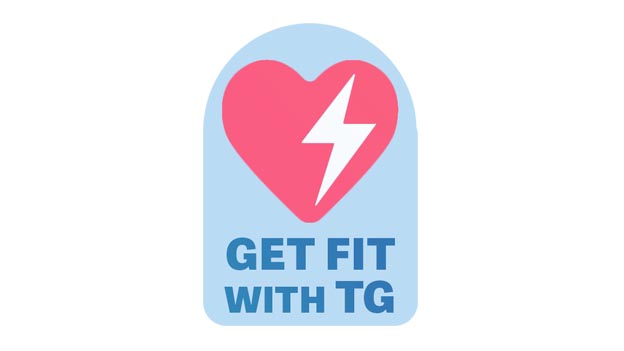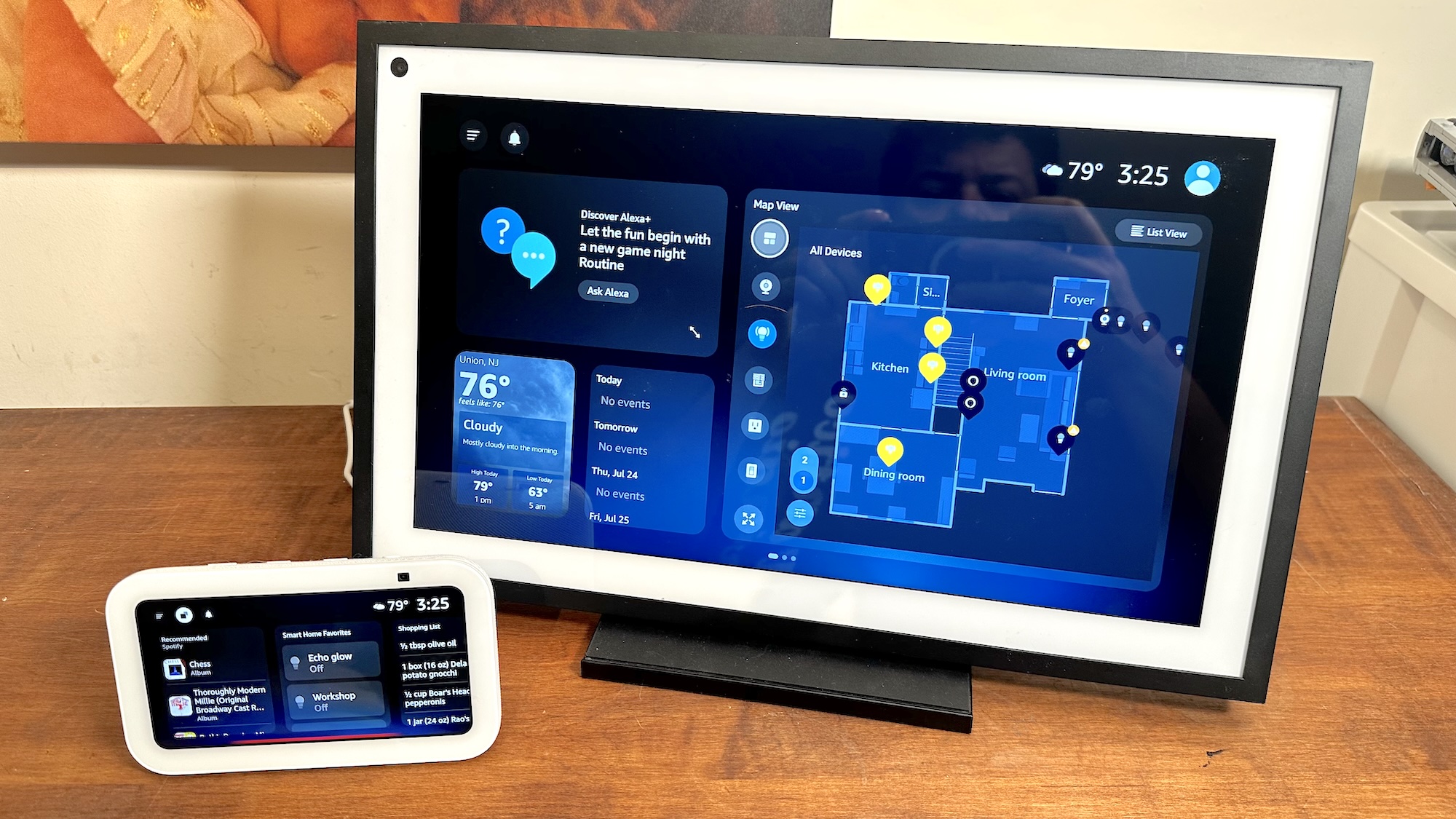
If you’ve got a spare medium to heavy dumbbell handy, pick it up and try this beast-mode one-dumbbell workout to chisel your chest, back and legs. You only need five moves and 20 minutes to get it done, and you don’t need any other equipment, just an adjustable dumbbell or regular hex.
Don’t be fooled, though. We designed this dumbbell workout to scorch the major muscle groups using several techniques that won’t rely on heavy weights — yep, there are ways to build muscle without lifting heavier weights. To get the best results over time, you’ll need to add this routine to your existing exercise program and repeat it as you get fitter and stronger.

Here on the Tom's Guide fitness desk, we're all about making 2024 your healthiest, and happiest year yet! To kick things off with a bang, we'll be bringing you a month of motivational content to help you Get Fit with Tom's Guide.
Below, we explain how to do the full-body workout using just one dumbbell, plus ways to scale and modify depending on your experience and ability. Whether you’re hitting CrossFit classes several times a week or just beginning your fitness journey, we’ve got you covered.
What are the benefits of a one-dumbbell workout?
Gyms get busy during the new year, and you might only sometimes get the gym machines you want or the space you need.
No worries, because if you put the gym machines vs free weights argument to us, we’d pick free weights all day long. You can find a space to roll out an exercise mat at home or in your local studio, and you won’t need to move from the spot for the whole workout. Sound good? Read on for the exercises and how to structure the program.
What is the full-body one-dumbbell workout?
First, here's a breakdown of the exercises.
Dumbbell snatch
If you haven’t already got the dumbbell snatch in your hurt locker, we cover how to snatch correctly using a dumbbell, kettlebell, or barbell variation. Although the snatch is a technical lift, it’s accessible for anyone to try, and if you develop the skill early, you’ll find many variations and tricks you can learn.
Get instant access to breaking news, the hottest reviews, great deals and helpful tips.
Try to drive the weight with explosive power and keep the dumbbell close to your body as you send the weight overhead, catching it with a soft knee bend, then stand properly. Some variations will suggest catching the weight in an overhead squat, but if you’re still learning, this can wait. Start light as a beginner, then build weight when you feel comfortable with the technique.
Dumbbell clean and press
Drop to one weight and single-load the body for your clean and press, switching arms halfway through the reps. A single-arm clean and press should be performed as one fluid movement, so as you clean to your shoulder, move straight into your press by punching the weight overhead, keeping your arm close to your head. Pause at the top, then reverse the motion to your starting position for one rep. As a beginner, it’s a good idea to scale the weight back until you feel comfortable and choose one weight that you can lift on both sides.
Dumbbell renegade row
A Tom’s Guide, we love the renegade row. The move challenges your biceps and back muscles, builds core strength and activates your shoulders, glutes, hip flexors and chest. It’s an out-and-out full-body exercise, even though the pulling motion suggests back and bis. Keep your hips square and use your knees if you can’t maintain good form on your toes. Squeeze your stomach, glutes and quads to maintain the plank position as you row one arm toward your back pocket and lower it again. Your shoulders should always stack over your wrists. We recommend completing reps on one side before switching arms.
Dumbbell bentover row (single arm)
The bentover row uses the hip hinge to send your weight forward, chest parallel to the floor. Position yourself with a soft knee bend so that you don’t overload your back, then draw the dumbbell toward your back pocket while keeping your elbow close to your ribcage. Squeeze your back and pause each time, slowing the exercise down for maximum engagement as you row. Switch sides halfway through your reps. The standing position should engage your posterior chain — the lower back, glutes and hamstrings — while working your hip flexors and testing core strength to hold the position. The back and biceps should be driving movement, so avoid swinging the weight and control the dumbbell through each phase.
Front rack dumbbell squat
The front rack offsets the weight, so ensure both feet stay planted and try to adopt the tripod foot position — press down through your little and big toes and the heels. Sit low into the squat position with a flat, neutral back, and drive up through your legs to stand. Complete half the rep range while holding the weight on one shoulder, then switch over.
The workout:
Time cap: 20 minutes
22-18-16-12-8-6-2 reps for time
Inspired by CrossFit-style workout set-ups, complete 22 reps of each exercise (total, split your reps each arm). Once completed, move to 18 reps, then 16 and so on.
You can choose any dumbbell weight, but we recommend lifting a medium to heavy weight to get the most out of the workout routine. It should feel challenging so you don’t fly through reps too early. Aim to finish at around 16-17 minutes, but you have 20 minutes to complete it.
Unilateral exercises load one side of the body to build strength and muscle while offsetting the weight, so they are renowned for improving balance, coordination and core stability, too. From a neuromuscular standpoint, this teaches something called “cross-education,” when muscles in the opposite untrained limbs can get stronger or ‘increase motor output’ following unilateral exercise training. The current research remains inconclusive on why it happens, but we know it does exist.
Although you might shift less weight overall by engaging in unilateral exercises versus dual loading, you’ll teach both sides of the body to recruit in the same way, meaning any weaker areas, stabilizer muscles and underused groups have the opportunity to strengthen without your overused muscles taking over. In theory, training this way could help build a more functional, robust body with less chance of imbalances. With that in mind, use a weight that allows you to work with a full range of motion on your weaker side, which should level up if you continue practicing.
Take rest when you need it, but remember the time cap, which has been purposely set to keep you accountable rather than cruising.
Tom's Guide
- I did 50 kettlebell clean and jerks every day for one week, here's what happened to my body
- I did the 3-minute butterfly pose every day for one week, here's what happened
- I've walked 10,000 steps a day for the past 90 days, here's what I learned

Sam Hopes is a level 3 qualified trainer, a level 2 Reiki practitioner and fitness editor at Tom's Guide. She is also currently undertaking her Yoga For Athletes training course.
Sam has written for various fitness brands and websites over the years and has experience across brands at Future, such as Live Science, Fit&Well, Coach, and T3.
Having coached at fitness studios like F45 and Virgin Active and personal trained, Sam now primarily teaches outdoor bootcamps, bodyweight, calisthenics and kettlebells.
She also coaches mobility and flexibility classes several times a week and believes that true strength comes from a holistic approach to training your body.
Sam has completed two mixed doubles Hyrox competitions in London and the Netherlands and finished her first doubles attempt in 1:11.
